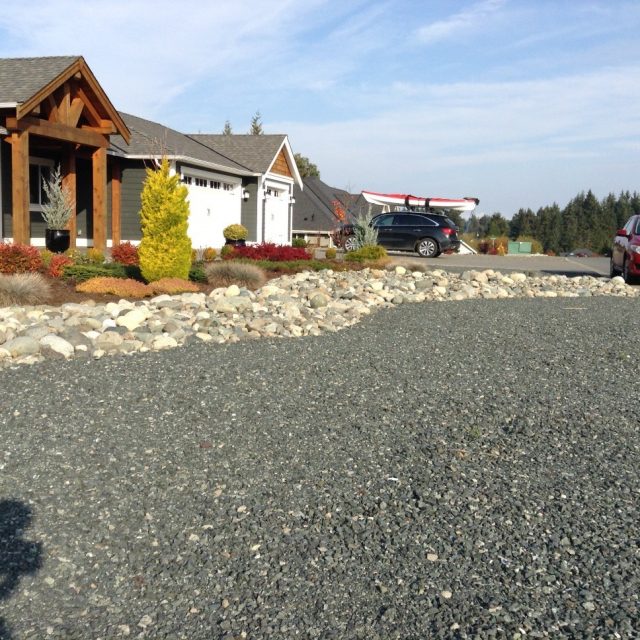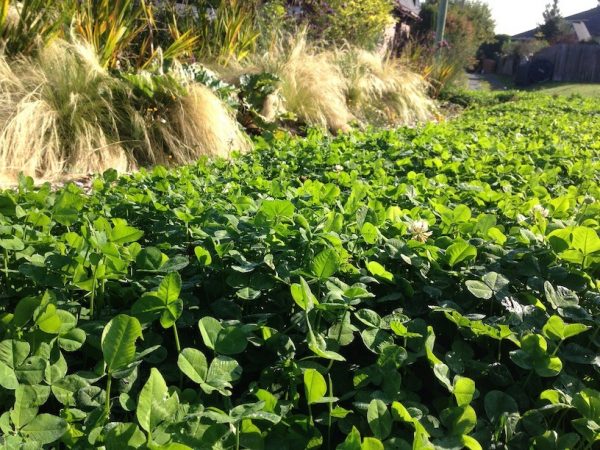I see a growing trend within new subdivisions on Vancouver Island where gravel is being used as a replacement for grass or another ground cover. I believe this is an example of short-term thinking and economics, people are being sold a bill of goods without seeing the full implications. I get the concept; I don’t want a lawn that will take time to mow and require irrigation. The trouble that I see is this concept has not been played out over time with an objective view. What happens when we place gravel in an area that instead of a planting bed or lawn area? Well, the first step after applying the gravel is a sense of relief from the homeowner, they don’t have the lawn to cut. I think you’ll find that one task is going to be replaced by another.
Nature has mechanisms in place to heal damaged land; otherwise, there would be little change after natural disturbances such as landslides. When we harm or clear an area, the first line of defence for nature is to quickly establish some annual weeds that help to build some fertility. These annual weeds proliferate, have minimal root systems, they quickly flower and die. The remaining roots and leaves are organic matter and will decompose and make a nice little pocket of soil for more weeds to germinate. Homeowners that adopt gravel into their landscapes will need to develop a strategy of dealing with these weeds either by spraying herbicides, pulling the weeds or using a torch or flame to burn the tops. This treatment will need to be repeated for the lifetime of the landscape.
There are some alternatives to this approach which are better for the local environment and don’t contribute to the slow degradation of a gravel pit. These were once forested lands that were logged and cleared for the sand and gravel which lies beneath the ground.
Some alternative methods would include:
• Instead of using traditional turf grass (which is made up of non-native species) look for grasses that thrive in the conditions which exist on your site. We have been experimenting with the use of Sheep’s Fescue and clover, and there are several different approaches with lower levels of maintenance.
Look at other ground cover options such as woolly thyme, our native ground cover known as kinnikinnick.
Image above showing Dutch White Clover
• One of the primary reasons that lawns underperform in an urban environment is related to site disturbance and compaction during the construction phase of a house. Typically you find the area allocated for landscape use is compacted and lacks any good soils. Given that soils exchange air within the top 8” each hour we need to re-establish this, one approach includes using a broad fork (a fork with 14” tines) where we mechanically de-compact an area without disturbing the surface. This results in deeper soils and promotes deep-rooted turfgrass. Turfgrass roots can grow 3’ deep (or deeper) if soils are not compacted. Once established a deep-rooted lawn area will require minimal water and look green during periods of drought while your neighbour’s lawn turns brown.
Let’s #saynotogravel and put some life back into our landscapes.
For more information, you can contact us via our website or visit us on Facebook, Instagram, LinkedIn


